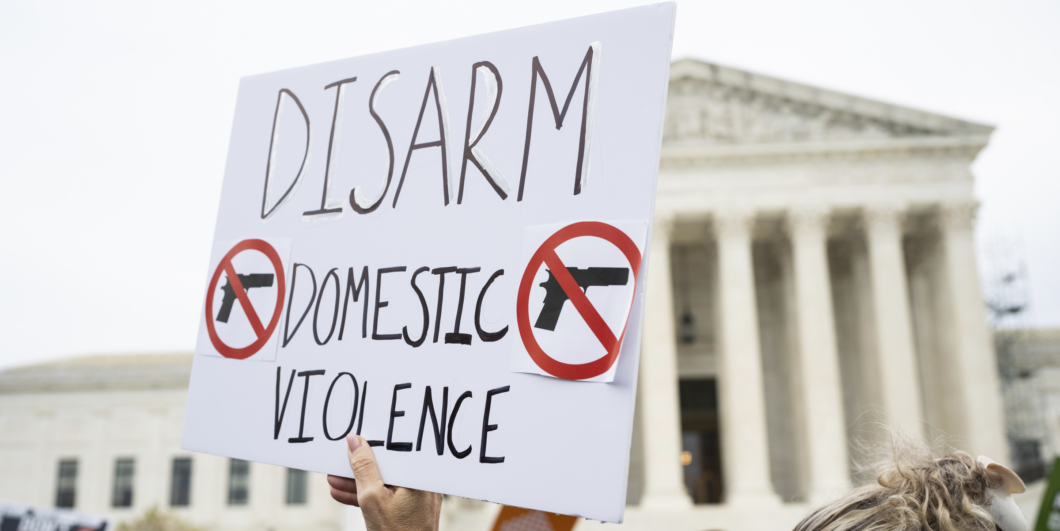The term’s central question is whether the Court majority can interpret the law as written even as others press for the law's distortion.
A Specious Form of Judicial Restraint
When eight members of our disputatious Supreme Court join an opinion on a controversial topic like the Second Amendment, it’s safe to expect a narrow decision. Chief Justice John Roberts’s opinion in United States v. Rahimi is indeed narrowly drawn, and this consensus will encourage proponents of strong gun rights to applaud the Court’s restraint.
Every Justice rejected the Biden Administration’s proposal to give legislatures wide latitude to disarm individuals or groups considered by the government to be dangerous or irresponsible. But while the decision certainly could have been worse, we should recognize that the Court misapplied its own precedent and misinterpreted the Second Amendment. Only Justice Clarence Thomas’s solo dissent was genuinely restrained because it alone was faithful to the Constitution.
Rahimi reviewed a law, 18 U.S.C. § 922(g)(8), that deprives certain people of their Second Amendment rights. If a domestic violence restraining order says that its subject represents a credible threat to the physical safety of the subject’s “intimate partner” or the partner’s child, the statute automatically makes it a federal felony for the subject to possess a firearm. A conviction for that felony, in turn, extends the ban on possession for the rest of the subject’s life.
The governing precedent was New York State Rifle and Pistol Ass’n v. Bruen (2022), where a 6-3 majority stated:
We hold that when the Second Amendment’s plain text covers an individual’s conduct, the Constitution presumptively protects that conduct. To justify its regulation, the government may not simply posit that the regulation promotes an important interest. Rather, the government must demonstrate that the regulation is consistent with this Nation’s historical tradition of firearm regulation. Only if a firearm regulation is consistent with this Nation’s historical tradition may a court conclude that the individual’s conduct falls outside the Second Amendment’s “unqualified command.”
This holding repudiated a large body of case law in which the lower courts had upheld almost every form of gun control they encountered. Bruen aimed to replace such result-oriented deference to politicians with fidelity to the original meaning of the Second Amendment.
Justice Thomas’s majority opinion in Bruen was reasonably clear about the kind of historical evidence that could demonstrate consistency with our historical tradition. Strong precedents would include laws that were widespread and uncontroversial when the constitutional provision was adopted, or shortly thereafter, as well as historical regulations that are “distinctly similar” to the modern law being challenged.
Bruen did not draw bright lines, which inevitably left room for debate about some issues. When, for example, was a proffered precedent adopted too long after the Bill of Rights was ratified to throw light on the Constitution’s original meaning? And exactly how similar must the historical regulation be to the modern law at issue? In addition, the Court acknowledged that there may be peculiarly modern problems that invite novel solutions. The invention of nuclear weapons would be an obvious example. Generally speaking, an appropriate analysis will involve “two relevant metrics: first, whether modern and historical regulations impose a comparable burden on the right of armed self-defense, and second, whether that regulatory burden is comparably justified.”
Purporting to apply this precedent, Rahimi held that “an individual found by a court to pose a credible threat to the physical safety of another may be temporarily disarmed consistent with the Second Amendment.” More specifically, the Court upheld § 922(g)(8), which makes it a felony to possess a firearm while under a restraining order that includes a finding that the subject is a threat to the physical safety of the subject’s intimate partner or child.
The Court purported to discover the requisite regulatory tradition in two bodies of law. First, judicial magistrates had long been authorized to require individuals to provide a surety or bond when there was probable cause to suspect that they would not behave peaceably. Second, an ancient prohibition made it a crime to terrify the people by carrying dangerous and unusual arms in public. Violations of this law could be punished by prison and forfeiture of the arms that had been improperly displayed.
From these strands of history, Chief Justice Roberts derived a principle that he attributed to common sense: “When an individual poses a clear threat of physical violence to another, the threatening individual may be disarmed.” It would be hard to dispute this proposition in the abstract. But when a court invokes common sense, it usually pays to ask whether it is a substitute for a valid legal argument. And in this case, the Court’s defense of § 922(g)(8) collapses under close scrutiny, as Justice Thomas demonstrated in his dissent.
First, the surety laws merely imposed a forfeiture of the bond if the subject broke the peace. They did not forbid the subject to possess or acquire firearms, or to carry them in public. Section 922(g)(8), however, is radically different because it imposes an absolute ban on possessing any firearm, even within one’s own home. The notion that these laws impose what Bruen called a “comparable burden on the right of armed self-defense” could charitably be said to defy common sense as well as the ordinary meaning of the word “comparable.” The surety laws put no limits on the individual’s access to guns, whereas § 922(g)(8) completely strips the individual of his Second Amendment rights. As Justice Thomas pointed out, Bruen had recognized that the surety laws offered no support for laws that severely restrict the right to carry a weapon in public, so they could hardly support a law that sweeps even more broadly to include mere possession in one’s home.
A statute that makes it so easy for someone to be forever disarmed is a serious infringement of the Second Amendment, even when applied to an individual who may in fact be dangerously irresponsible.
Second, the anti-terror laws were not comparable to § 922(g)(8), either in their justification or in the extent of their burden. These laws were not aimed at preventing violence against individuals but at punishing a disruption of the public peace. The burden on the individual’s right to arms was also much smaller. The individual might lose the weapons he had misused and receive a prison sentence, but he would otherwise be completely free to keep and bear arms. Conviction under § 922(g)(8) goes much further because felons are now automatically deprived of all their Second Amendment rights for the rest of their lives.
The Rahimi majority did not actually argue that either of these kinds of historical laws are comparable to § 922(g)(8). Instead, the Court simply asserted that taken together they somehow show that the modern statute “fits neatly within the tradition” they supposedly represent. So two kinds of historical laws that were not comparable to § 922(g)(8) magically conjure a “tradition” in which there are no examples that actually resemble the modern law. Bruen does not support this imaginative journey into historical fiction.
The real tradition, which persisted from the founding era well into the twentieth century, left all Americans, including even violent felons, free to keep a firearm in their home for self-defense and to carry weapons in public, so long as they did not misuse them. So much for the idea that Bruen’s history-and-tradition test would prevent judges from substituting their own policy preferences for obedience to the original meaning of the Constitution.
This is not just a case in which the Court misrepresented its own precedents, which is hardly a rare phenomenon. Section 922(g)(8) is unconstitutional for a reason that is much more important than Bruen’s legal test: the statute is inconsistent with the central purpose of the Second Amendment. That purpose, as the Court has repeatedly and correctly recognized in other cases, is to protect the inherent and fundamental right of self-defense.
A domestic violence restraining order is meant to protect a specific and very small class of people, “intimate partners” and their children, from physical attacks by the other partner. Even when a court order contains a finding that the subject represents a credible threat of such an attack, § 922(g)(8) does not require evidence that the finding is accurate or even proof that the subject of the order has made any threats. Indeed, the federal statute does not even require that the partner be in fear of the subject. And where there is actual evidence of threatening conduct, the conduct need have no connection at all with firearms. Threatening to put an emetic in the partner’s dinner, or promising to give the couple’s child a spanking, may result in a restraining order that automatically suspends the subject’s Second Amendment rights.
The Rahimi majority maintained that it need only identify one circumstance in which the ban on firearms would pass constitutional muster, and it offered this very case as an example. Chief Justice Roberts’s opinion recites a collection of criminal violations, several of which involved the gross misuse of firearms, that would make any sensible person agree that Zackey Rahimi should not have access to a gun. Hence the “bad litigation optics” that were widely expected to make his case a loser.
Even accepting the Court’s dubious premise that a single constitutionally permissible application of § 922(g)(8) should be sufficient to prevent it from being declared unconstitutional, Rahimi’s case illustrates why such disarmament statutes were unknown until long after the Second Amendment was adopted. Although it’s easy to miss, Chief Justice Roberts does not in fact claim that Rahimi had been convicted of any crime when the restraining order was issued, or when a gun was later found in his home, or when he was convicted of violating § 922(g)(8). He has been accused of several serious crimes under state law, and he may well belong in prison. But even if he is exonerated of every charge, he is still exposed to a ten-year sentence and an automatic lifetime ban on possessing a firearm.
A statute that makes it so easy for someone to be forever disarmed is a serious infringement of the Second Amendment, even when applied to an individual who may in fact be dangerously irresponsible. State governments have many tools for deterring and punishing violent or threatening behavior. Most notably, they criminalize such conduct and imprison violators. In many cases, the legal system may force them to compensate their victims and deprive them of custody of their children. Indeed, domestic violence restraining orders themselves do not generally violate the Second Amendment, and in some circumstances may appropriately restrict the subject’s access to guns. If a woman involved in an acrimonious divorce has threatened to shoot her husband, for example, both common sense and the Second Amendment would permit a court to tell her not to bring a gun when she meets with him.
With these and other tools available to them, the states do not need Congress to displace their decisions by imposing a complete firearms disability on people who may have done nothing worse than excitedly shoot their mouths off and who may have a real need to keep a gun for self-protection.
Rahimi’s revisionist analysis is a signal for the lower courts to find similar ways to uphold politically appealing statutes that don’t pass the Bruen test and do violate the Constitution. We should hope that this won’t happen and that the Supreme Court itself won’t do it again. But Rahimi’s deformation of Bruen seems to presage more new dilutions of the Second Amendment. Such dilutions constitute judicial abdication, not judicial restraint.



